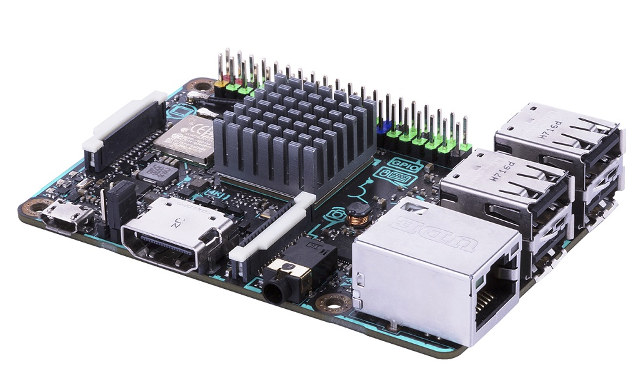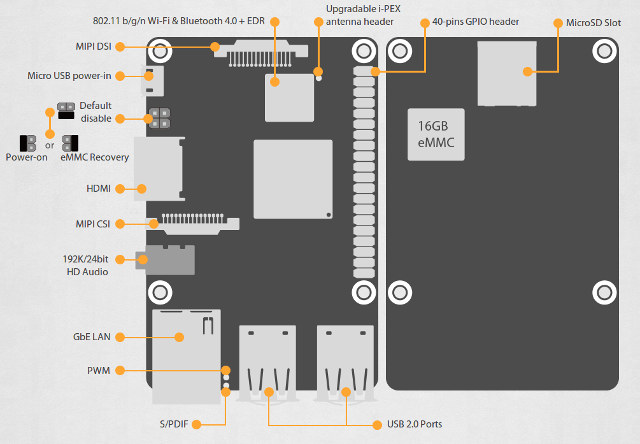ASUS Tinker Board generated a lot of buzz on this blog when it launched last year as a large company like ASUS entered the maker market with a Raspberry Pi 3 competitor with more powerful and 4K capable Rockchip RK3288 processor.
The company has now announced an update at CES 2018 with Tinker Board S with the same features, except for the additional of 16GB eMMC flash and a few other minor changes.

ASUS Tinker Board S specifications:
- SoC – Rockchip RK3288 quad core ARM Cortex A17 processor up to 1.8 GHz with Mali-T764 GPU supporting OpenGL ES 1.1/2.0 /3.0, and OpenCL 1.1
- System Memory – 2GB dual channel LPDDR3
- Storage – 16GB eMMC flash + micro SD slot
- Video output & Display I/F
- 1x HDMI 2.0 up to 3840×2160 @ 30 Hz with HDMI CEC
- 1x 15-pin MIPI DSI supporting HD resolution
- Audio – 1x 3.5mm audio jack with plug-in detection and auto switch; Realtek ALC4040 HD codec with 192KHz/24-bit audio
- Camera I/F – 1x 15-pin MIPI CSI connector
- Connectivity – Gigabit Ethernet, 802.11 b/g/n WiFi, Bluetooth 4.0 + EDR
- USB – 4x USB 2.0 host ports, 1x micro USB port (for power)
- Expansion Headers
- 40-pin Raspberry Pi compatible header with up to 28x GPIOs, 2x SPI, 2x I2C, 4x UART, 2x PWM, 1x PCM/I2S with slave mode, 5V, 3.3V, and GND
- 2-pin contact point with 1x PWM signal, 1x S/PDIF signal
- 2-pin power-on-header
- Misc – Button, unpopulated fan header
- Power Supply – 5V/2-3A via micro USB port with support for low voltage detection
- Dimensions – 85.6 x 54 cm
- Weight – 55 grams

Just like its predecessor, Tinker Board S can run Debian 9 + LXDE based Tinker OS, as well as Android Tinker OS, and Flint OS. The board also supports popular programs such as Kodi medi center or Lakka and RetroPie retro gaming platforms, as well as expansion boards like HiFiBerry sound cards or MATRIX Creator IoT / sensors board.
The Tinkerboard S will be available in Q1 2018 for $79.99 MSRP. Visit the product page for documentation (WiP) and more details.

Jean-Luc started CNX Software in 2010 as a part-time endeavor, before quitting his job as a software engineering manager, and starting to write daily news, and reviews full time later in 2011.
Support CNX Software! Donate via cryptocurrencies, become a Patron on Patreon, or purchase goods on Amazon or Aliexpress




